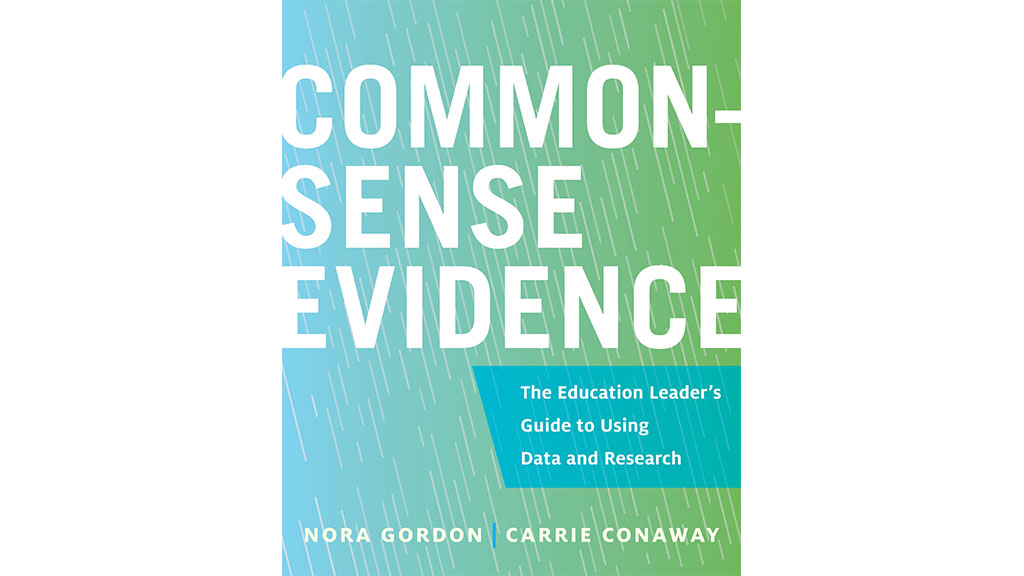In their book Common Sense Evidence: The Educator Leader’s Guide to Using Data and Research, Nora Gordan and Carrie Conaway guide educational leaders through the process of building research skills to enhance and differentiate information to serve the needs of their organizations. Accomplished in research methods and statistics, the authors draw on their experience from the last two decades of conducting their own research and reviewing others’ research. They’ve also taught graduate and undergraduate classes in education policy and research methods. In addition, they’ve helped educational professionals, policymakers, and journalists interpret research.
The book is organized into seven steps or chapters to guide the reader through using research as a basis for improvement. Although the authors acknowledge research is not a linear process, they organize the chapters systematically to promote understanding of the approach. Real-world case studies from the school, district, and state levels are cultivated throughout the book.
In Chapter one, Gordan and Conaway use case studies to illustrate how to turn problems at the school, district, and state levels into questions that educators can answer through research.
Chapters two and three focus on reliable research sources and how to analyze research studies. Gordan and Conaway guide the reader through the process of researching possible answers to the questions generated in chapter one. The authors review various sources for educators to explore while cautioning on potential biases present in some published works. Educational studies are used in conjunction with the case studies to demonstrate how to determine the significance of the study as it applies to the problem and not be overwhelmed with statistical data.

Gordan and Conaway discuss how the Every Student Succeeds Act (ESSA) defines evidence, the types of evidence not addressed within ESSA, and the implications for educators. The discussion of how ESSA encourages schools to conduct their own research and apply their data for educational improvements sets up the discussion of how to learn from the data generated.
Chapter five centers on using comparisons and the data gathered to answer the questions generated in chapter one. Gordan and Conaway use graphs, charts, and tables to illuminate the similarities and differences within the data. Data gathered throughout the development of the case studies is used to assist the reader in visualizing the data.
In the final chapter, Gordan and Conaway discuss ways to build and support a culture of evidence-based practices using the data from within the organization. They say that organizations need to redesign their culture to use more evidence to promote changes but caution these changes should be incremental to promote routines that lead to sustainability.
This book offers educators a straightforward route to using research and data to solve problems within their organization. Whether the reader is a beginner, intermediate, or advanced user of research-based evidence, the book is a must-read for any education leader aspiring to create and sustain a culture that uses research and data to inform practice.
Rahnda Ford (mrsd4rd@gmail.com) is a doctoral student at the University of North Carolina Charlotte.

Share this content